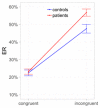Addiction as Learned Behavior Patterns
- PMID: 31344831
- PMCID: PMC6723628
- DOI: 10.3390/jcm8081086
Addiction as Learned Behavior Patterns
Abstract
Individuals with substance use disorders (SUDs) have to cope with drug-related cues and contexts which can affect instrumental drug seeking, as shown with Pavlovian-to-instrumental transfer (PIT) tasks among humans and animals. Our review addresses two potential mechanisms that may contribute to habitual or even compulsive drug seeking and taking. One mechanism is represented by Pavlovian and PIT effects on drug intake. The other is a shift from goal-directed to habitual drug intake, which can be accessed via model-based versus model-free decision-making in respective learning tasks. We discuss the impact of these learning mechanisms on drug consumption. First, we describe how Pavlovian and instrumental learning mechanisms interact in drug addiction. Secondly, we address the effects of acute and chronic stress exposure on behavioral and neural PIT effects in alcohol use disorder (AUD). Thirdly, we discuss how these learning mechanisms and their respective neurobiological correlates can contribute to losing versus regaining control over drug intake. Utilizing mobile technology (mobile applications on smartphones including games that measure learning mechanisms, activity bracelets), computational models, and real-world data may help to better identify patients with a high relapse risk and to offer targeted behavioral and pharmacotherapeutic interventions for vulnerable patients.
Keywords: alternative reward; animal and computational models; behavioral control; craving and relapse; cue exposure; habit formation; substance use disorders.
Conflict of interest statement
The authors declare no conflict of interest.
Figures


References
-
- Wise R.A. Neuroleptics and operant behavior: The anhedonia hypothesis. Behav. Brain Sci. 1982;5:39–53. doi: 10.1017/S0140525X00010372. - DOI
-
- Heinz A., Knable M.B., Coppola R., Gorey J.G., Jones D.W., Lee K.-S., Weinberger D.R. Psychomotor slowing, negative symptoms and dopamine receptor availability—An IBZM SPECT study in neuroleptic-treated and drug-free schizophrenic patients. Schizophr. Res. 1998;31:19–26. doi: 10.1016/S0920-9964(98)00003-6. - DOI - PubMed
Publication types
LinkOut - more resources
Full Text Sources

